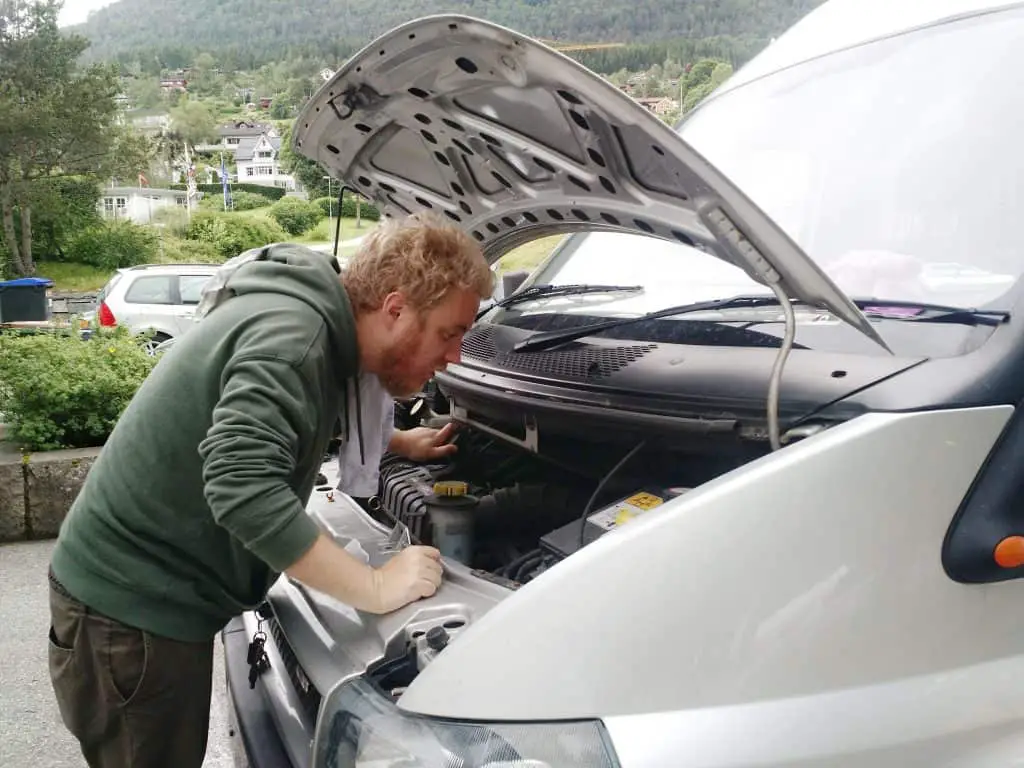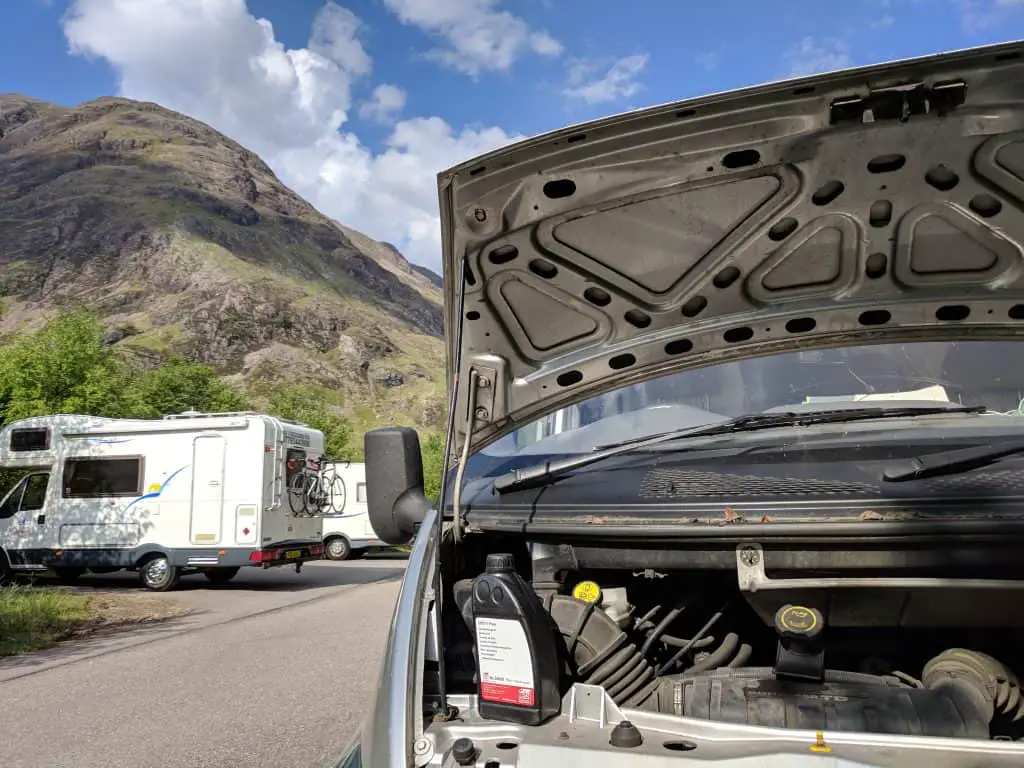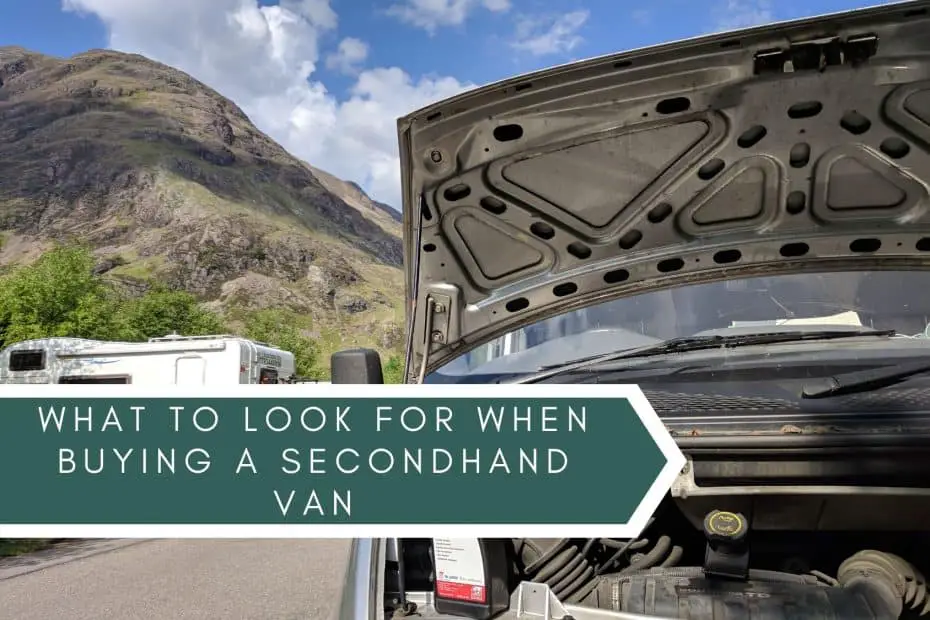You’ve done all your research online and have a van in your sights. The photos make it look in good condition and the description makes the van sound perfect for you so you have organised a viewing. That’s when the questions arise of what to look for when viewing a second hand van. There are so many things to look at and it might seem that if you aren’t a qualified mechanic you won’t have a clue where to start. That’s why we thought we’d put together a list of some basic things you can look for that don’t require you to become an apprentice mechanic just to suss out if the van is going to be a good purchase.
This is by no means an exhaustive list of things to check and will not cover anything, but it will give you a good indication of how well the van has been looked after. These are the checks we do when looking at buying vans to convert and so are a great place to start.
Check the MOT history
With just the registration number you are able to check the MOT history of your van online using the MOT Checker on the DVLA website. This will give you a list of all of the failures and advisories your potential van will have had as well as any work that will have been completed in order for the van to pass the MOT. While an MOT is not an indication of how well a van will run it does show some key issues that affect the safety of the van as well as highlighting any problem areas such as rust on the frame and joints. The best thing is that you can do this even before you go to visit the van and so can save yourself a journey if it turns out to be a dud.
Ask for the service history
Owners who take good care of their vehicles and remember to regularly service their vehicles tend to keep a pretty extensive service history. These can be dates of annual services, parts replacements, receipts of work undertaken etc and give an indication of not only whether the van was looked after, but also provides proof of vital works undertaken on the van so you know how long before you can expect to have to replace parts. While it’s not a deal breaker for me if I find a van that has an incomplete service history it does mean that I will put it under far greater scrutiny.
Before you start the engine
Now that you’ve actually arrived at the van it’s time to start checking over some things. Don’t be afraid to ask to do any of these things, they are perfectly normal things to want to do when buying a van and if the seller refuses then I would be walking away thinking they have something to hide. Take your time when inspecting the van, you don’t have to rush.
Look for rust
Walk fully around the van and look for any visible rust spots, take note of any bubbling paint, recently painted areas and cills and beams painted black to hide rust. It’s not only surface rust that you need to look for, you should be looking under each wheel well to see if these have gone rusty, a little knock with the back of a screwdriver will let you feel if they are solid or if they are rusty. Carefully get underneath the van and look at how the frame looks, are there excessive rust patches, do the beams look solid. Lift up any mats on the inside of the van and look for rust on joints and the floor where water can sometimes gather. While minor surface rust is easily treated, I would be walking away from any van that has excessive rust especially on the structure of the van itself.

Check for leaks
While you’re under the van looking for rust it’s a good time to get under there and see if you can find any leaks coming from the engine. Start by looking at the ground below the van, do you see any damp marks on the tarmac. Look for any pooling puddles on any of the elements of the engine, it should be relatively dry and so any puddles or wet patches are indications of potential leaks. Open up the bonnet and have a look from the top down with a torch, you’re looking for the same puddles or wet patches that might indicate a leak. Have a look at all of the levels of fluids in the van, often owners don’t top these up before a visit so you can see if any are particularly low. You want to avoid any vans where there are excessive leaks as these can be an indication of a larger problem and an even larger mechanics bill coming down the road.
Look at the vans fluids
As you look through the engine bay you will want to have a look at the fluids in the engine itself. How these look will be a great indication of the health of the van itself. Undo the oil filler cap and have a look to see if you can see a milky white residue, if you can then I would be walking away, it’s a sign of issues within the engine and something that can be potentially costly to fix. Similarly open the coolant reservoir and check to make sure that the fluid doesn’t contain an oily scum on top and is relatively clean. Make sure the fluids are topped up and take note of the levels of each because we will be checking these again once we have completed our test drive.
Start the engine
It’s vital that you start the engine of any van you are going to buy, and what is more you should be starting a cold engine. Often sellers will run their engine for a while before you arrive so that it starts easier and runs a bit smoother. You want to be starting an engine from cold to ensure you see exactly how it performs before it is up to temperature. If the van is already warm ask the seller if they have run it before you arrived and why, honesty from them hear can help, dishonesty is a sign for me to leave.
Does the engine start easily
You’ll be able to hear from a cold engine how well it starts, does it splutter or struggle. You want your van to start first time and without much fuss even from cold.

Check the exhaust
Once you’ve started the van ask the seller to slowly rev the engine while you go round to the back of the van to check the exhaust. If there’s no issues you shouldn’t see anything coming out of the exhaust. If there are problems with the van you may see white smoke, blue smoke or black smoke. Where as white smoke isn’t great it could be that the temperature that day was low and so you may see a little until the engine is up to temperature. Blue or black smoke are a no go and are a sign of the engine not burning correctly or an issue inside the engine itself.
Test the gears
You will want to be going on a test drive in any van you are looking to buy however before you set off you will want to check the gears. Does the van move between the gears easily and smoothly while you are stationary? Put the van into first gear and with the handbrake still engaged try to pull off, if the gear slips then you may have an issue.
Go for a test drive
Whether the seller will allow you to drive the van or not you want to either go on a test drive yourself or have them drive you around because you need to see and hear the van in action. Don’t let the test drive simply be around the block, you are going to need to see the engine get up to temperature to determine if there are any issues with cooling. You will be able to hear how easily the van copes while driving through the gears and how well it deals with hills. When going up a hill try to floor the van and see if there is any smoke coming out of the rear. Listen for knocking and creaking sounds as you make corners and be aware of an aggressive idling. The test drive is a vital fact finding part of buying a van and should not be skipped, many a bad purchase has been saved thanks to getting the van out on a test drive.
If you have any doubts then walk away
There are plenty of vans out there for you to buy to convert despite how it may feel sometimes and so if you have any doubts about a van then you should walk away. No van is perfect but trying to avoid some of these issues will save you both heartache and a large mechanics bill in the future.
